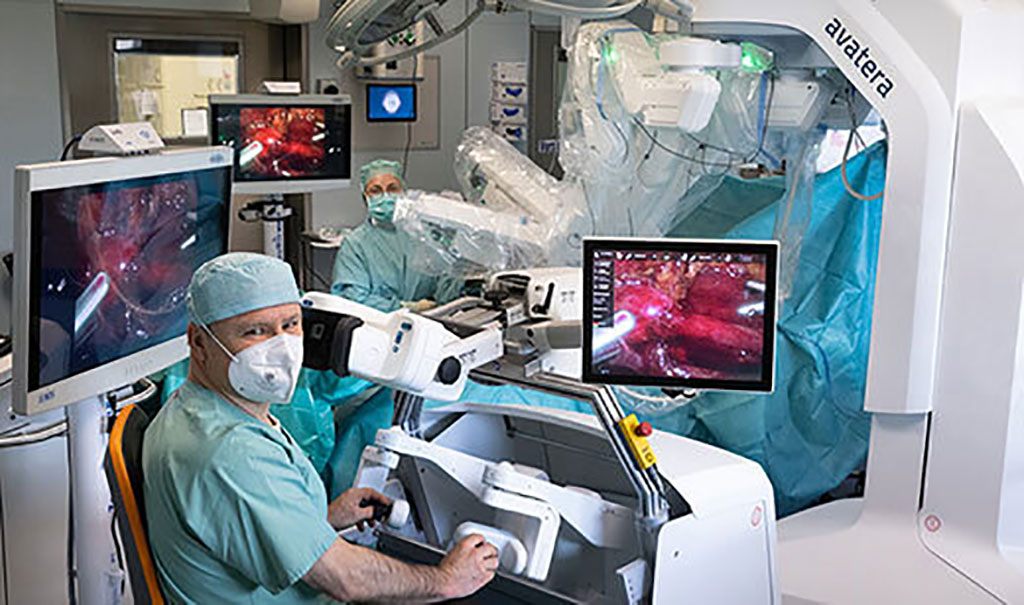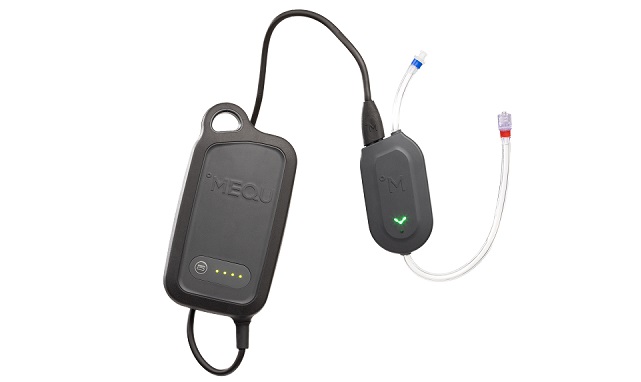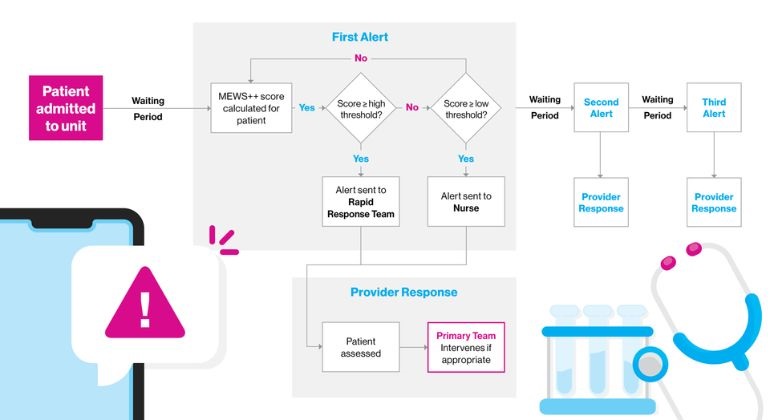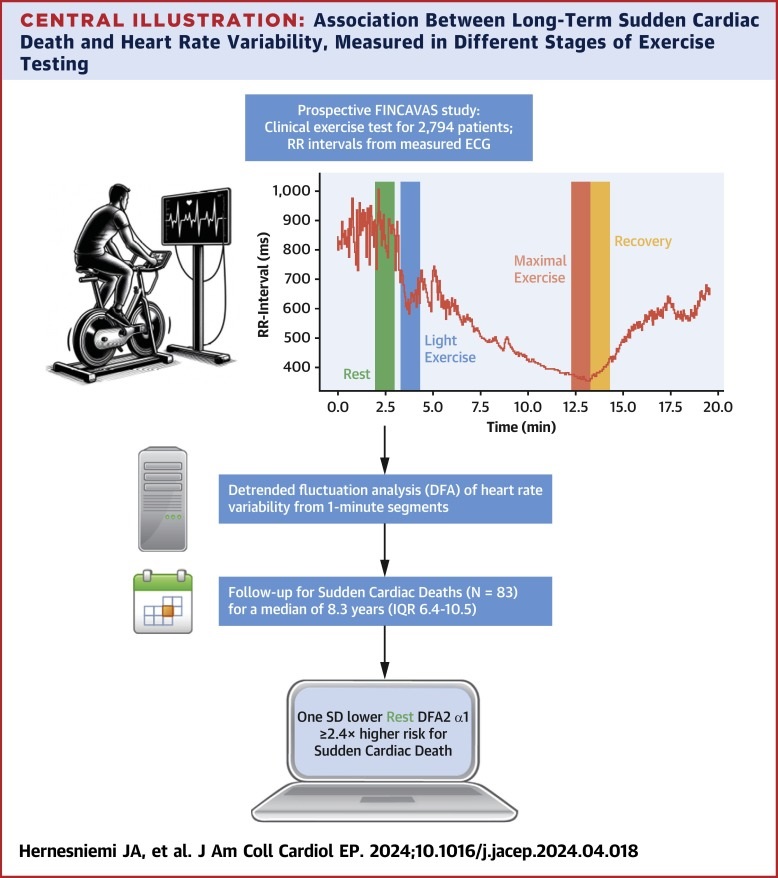Robotic Surgery System with Single-Use Instrument Concept Eliminates Cross-Contamination Risk
|
By HospiMedica International staff writers Posted on 11 May 2022 |

Up to now the use of robot-assisted procedures has been extremely resource intensive and therefore, not a viable option for many clinics. Now, a new robot-assisted, minimally invasive surgical system based on a unique and consistent single-use concept reduces the associated risk of contamination and at the same time avoids the costs of cleaning and sterilizing the instruments.
avateramedical GmbH’s (Jena, Germany) avatera is the first German system for robot-assisted, minimally invasive surgery and was developed as a high-quality solution for minimally invasive robotic surgery. Tailored to address specific user needs, the cutting-edge system enables precise keyhole surgery (so-called laparoscopy) with the highest level of safety for patients and maximum ergonomic comfort for surgeons and surgical teams. Its single-use concept for surgical instruments eliminates the need for complex and expensive sterilization processes, saving costs while always providing surgeons with new, reliable instruments, removing the risk of cross-contamination.
Additionally, the avatera system builds on and improves the features and functionality of currently available surgical robots, is easy and comfortable to use, and is specifically tailored to the needs of surgeons and their teams. The built-in seat and individual ergonomic adjustment options allow surgeons to work comfortably even during very long operations. An open design and low noise levels allow for ease of communication for the surgical teams. The compact system does not require much space and can easily fit in a wide variety of operating rooms.
The avatera robot-assisted, minimally invasive surgery system has successfully completed the first 10 surgeries in humans and has now been introduced into everyday clinical practice at the first hospital worldwide, the University of Leipzig Medical Center. Additionally, avatera has received the CE mark and is approved for minimally invasive surgery in urology and gynecology in the European Economic Area. Currently, the system is being rolled out at partner sites which will allow the company to gain additional experience in clinical routines.
“With the first in-human surgeries, we are entering a new exciting chapter in our company’s history,” said Greg Roche, CEO of avateramedical N.V. “It is our vision to make cutting-edge, efficient robot-assisted surgery accessible for every patient around the world.”
“The first surgical procedures on patients were performed at the University of Leipzig Medical Center to remove prostate and kidney tumors. We are thrilled that these procedures were so successful and that surgeons and their patients are now beginning to benefit from our work,” added Andreas Wegner-Berndt, Managing Director of avateramedical GmbH.”
Related Links:
avateramedical GmbH
Latest Surgical Techniques News
- Total Robotic Metabolic and Bariatric Surgery Proves More Beneficial than Conventional Laparoscopy
- Wirelessly Activated Robotic Device Aids Digestion in Patients with Compromised Organs

- Glowing Dye Helps Surgeons to Remove Hidden Prostate Cancer Cells in Real-Time
- Early Minimally Invasive Surgery Improves Intracerebral Hemorrhage Stroke Outcomes
- Early EVD Insertion Improves Surgical Outcome in Traumatic Brain Injury
- New Machine Learning Method Better Predicts Spine Surgery Outcomes
- New Research Platform Assesses Brain Cancer Mutations during Surgery
- Off-The-Shelf Surgical Device to Help Avoid Total Knee Replacement
- Study Warns Against Dangerous Smoke Levels Produced During Endoscopic Gastrointestinal Procedures
- New Hydrogel Sealant Effective at Sealing Dural Defects and Preventing Postoperative Adhesion
- MRI-Guided Multi-Stage Robotic Positioner Enhances Stereotactic Neurosurgery Precision

- AR Visualization System Improves Surgeons’ Capabilities and Spatial Awareness
- New Adhesive Hydrogel Coatings to Prolong Lifespan of Pacemakers and Medical Implants
- Maneuvering System Empowers Surgeons with Enhanced Control during Laparoscopic Procedures
- New Two-Dimensional Material Paves Way for Safer, More Effective Implantable Medical Devices
- Portable MRI Compatible Surgical Robot Improves Patients Outcomes for Neurosurgery
Channels
Critical Care
view channel
Portable System for Warming Blood and IV-Fluids Reduces Hypothermia Risk in Hemorrhaging Patients
Maintaining a normothermic temperature in patients is often challenging. Accidental hypothermia is a known risk that can lead to increased complications and extended hospital stays. One key factor contributing... Read more
AI-Generated Real-Time Alerts for Declining Health Speeds Up Treatment and Reduces Hospital Deaths
A fundamental objective of inpatient care is the timely intervention to prevent or manage clinical deterioration, which often leads to escalated care associated with poorer outcomes and increased use of resources.... Read more
Ingestible Microbiome Sampling Pill to Help Diagnose Wide Range of Health Conditions
The healthy human gut is home to more than 1,000 species of bacteria, most of which play a beneficial role in digestion and protecting against disease. When the natural balance of these microbes is disrupted,... Read morePatient Care
view channelFirst-Of-Its-Kind Portable Germicidal Light Technology Disinfects High-Touch Clinical Surfaces in Seconds
Reducing healthcare-acquired infections (HAIs) remains a pressing issue within global healthcare systems. In the United States alone, 1.7 million patients contract HAIs annually, leading to approximately... Read more
Surgical Capacity Optimization Solution Helps Hospitals Boost OR Utilization
An innovative solution has the capability to transform surgical capacity utilization by targeting the root cause of surgical block time inefficiencies. Fujitsu Limited’s (Tokyo, Japan) Surgical Capacity... Read more
Game-Changing Innovation in Surgical Instrument Sterilization Significantly Improves OR Throughput
A groundbreaking innovation enables hospitals to significantly improve instrument processing time and throughput in operating rooms (ORs) and sterile processing departments. Turbett Surgical, Inc.... Read moreHealth IT
view channel
Machine Learning Model Improves Mortality Risk Prediction for Cardiac Surgery Patients
Machine learning algorithms have been deployed to create predictive models in various medical fields, with some demonstrating improved outcomes compared to their standard-of-care counterparts.... Read more
Strategic Collaboration to Develop and Integrate Generative AI into Healthcare
Top industry experts have underscored the immediate requirement for healthcare systems and hospitals to respond to severe cost and margin pressures. Close to half of U.S. hospitals ended 2022 in the red... Read more
AI-Enabled Operating Rooms Solution Helps Hospitals Maximize Utilization and Unlock Capacity
For healthcare organizations, optimizing operating room (OR) utilization during prime time hours is a complex challenge. Surgeons and clinics face difficulties in finding available slots for booking cases,... Read more
AI Predicts Pancreatic Cancer Three Years before Diagnosis from Patients’ Medical Records
Screening for common cancers like breast, cervix, and prostate cancer relies on relatively simple and highly effective techniques, such as mammograms, Pap smears, and blood tests. These methods have revolutionized... Read morePoint of Care
view channel
POCT for Infectious Diseases Delivers Laboratory Equivalent Pathology Results
On-site pathology tests for infectious diseases in rural and remote locations can achieve the same level of reliability and accuracy as those conducted in hospital laboratories, a recent study suggests.... Read more
Cartridge-Based Hemostasis Analyzer System Enables Faster Coagulation Testing
Quickly assessing a patient's total hemostasis status can be critical to influencing clinical outcomes and using blood products. Haemonetics Corporation (Boston, MA, USA) has now obtained 510(k) clearance... Read more
Critical Bleeding Management System to Help Hospitals Further Standardize Viscoelastic Testing
Surgical procedures are often accompanied by significant blood loss and the subsequent high likelihood of the need for allogeneic blood transfusions. These transfusions, while critical, are linked to various... Read moreBusiness
view channel
BD Acquires Edwards Lifesciences' Critical Care Product Group for USD 4.2 Billion
BD (Becton, Dickinson and Company, Franklin Lakes, NJ, USA) and Edwards Lifesciences (Irvine, CA, USA) have entered into a definitive agreement under which BD will acquire Edwards' Critical Care product... Read more

















